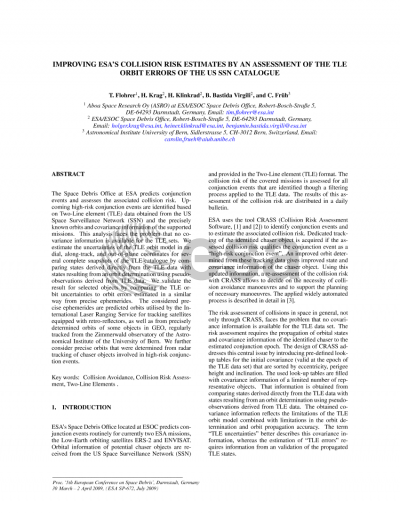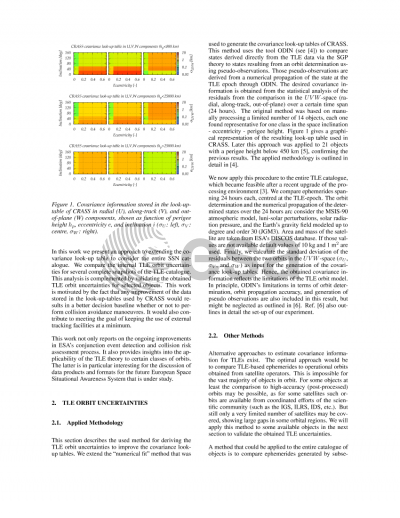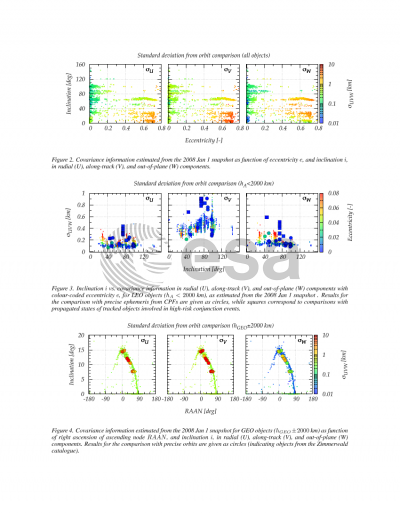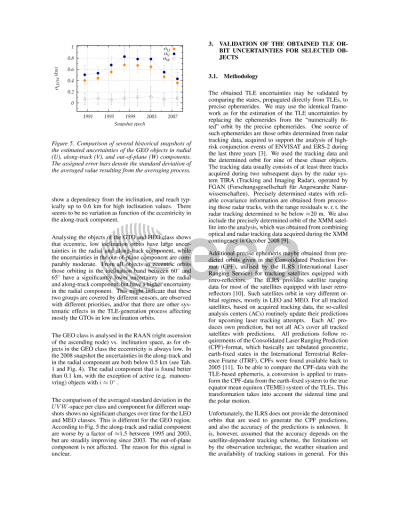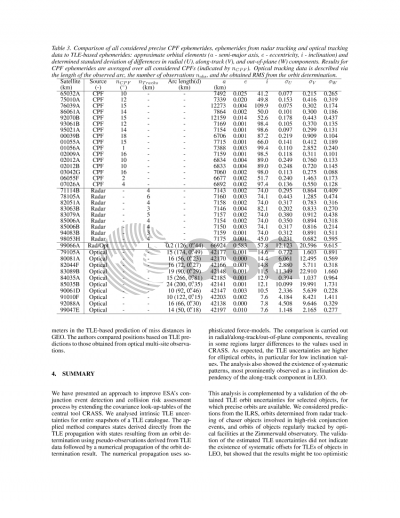Document details

Abstract
The Space Debris Office at ESA predicts conjunction events and assesses the associated collision risk. Upcoming high-risk conjunction events are identified based on Two-Line element (TLE) data obtained from the US Space Surveillance Network (SSN) and the precisely known orbits and covariance information of the supported missions. This analysis faces the problem that no covariance information is available for the TLE sets. We estimate the uncertainties of the TLE orbit model in radial, along-track, and out-of-plane coordinates for several complete snapshots of the TLE-catalogue by comparing states derived directly from the TLE data with states resulting from an orbit determination using pseudo-observations derived from TLE data. We validate the result for selected objects by comparing the TLE orbit uncertainties to orbit errors estimated in a similar way from precise ephemerides. The considered precise ephemerides are predicted orbits utilised by the International Laser Ranging Service for tracking satellites equipped with retro-reflectors, as well as from precisely determined orbits of some objects in GEO, regularly tracked from the Zimmerwald observatory of the Astronomical Institute of the University of Bern. We further consider precise orbits that were determined from radar tracking of chaser objects involved in high-risk conjunction events.
Preview
